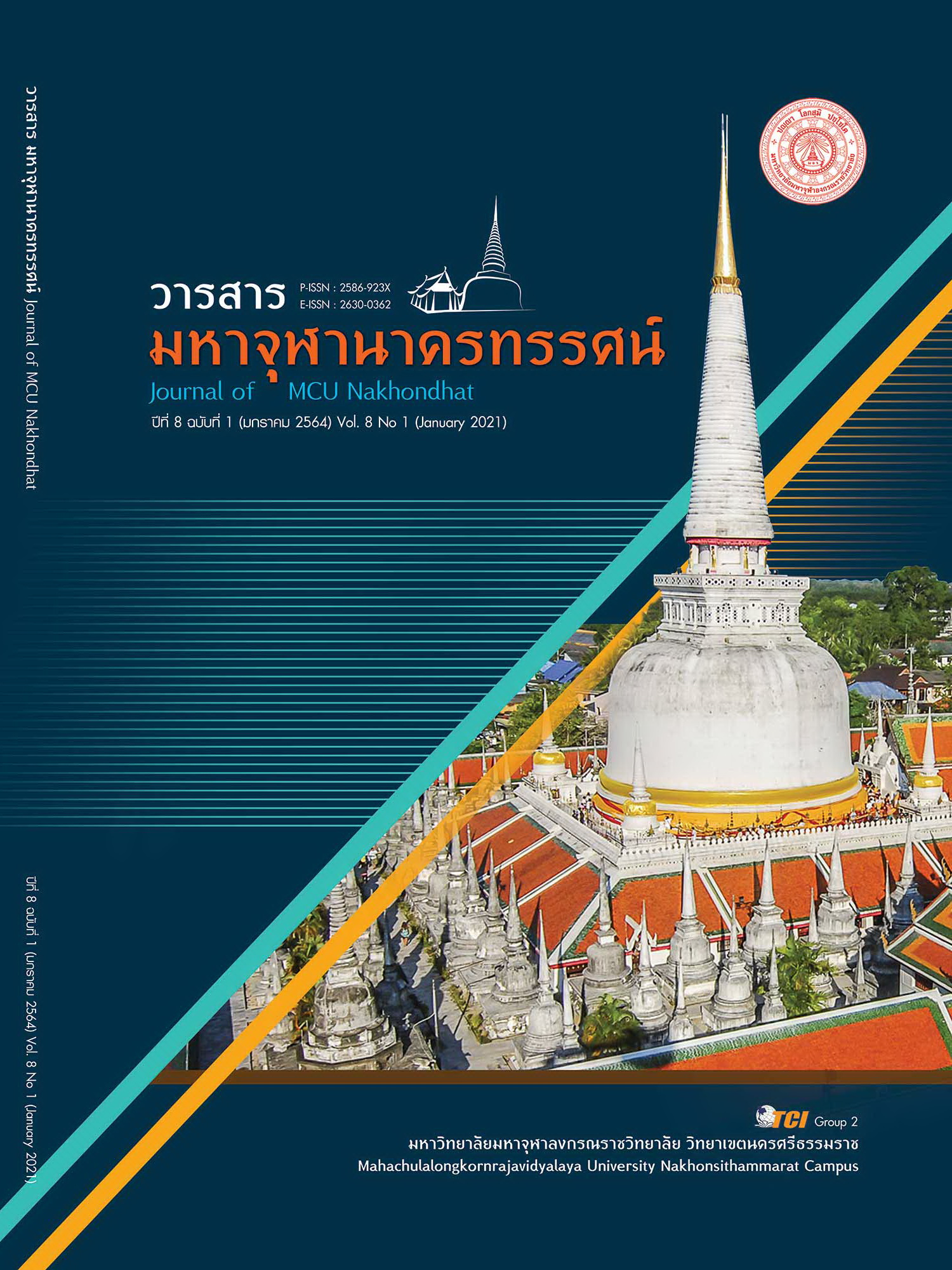WATER MANAGEMENT ACCORDING TO GOOD GOVERNANCE
Main Article Content
Abstract
Water is an important and essential resource for sustaining agricultural and industrial life. Thailand manages water according to the water resource management strategy. To maximize the use of water And to resolve flood and drought problems Such water management will be efficient and effective. Need for an integrated water management And apply the 6 principles of good governance in management To achieve water balance And beneficial to the public And able to sustainably solve flood and drought problems in society Although "water" is a natural resource that cannot be used up If appropriate water management should be performed So that communities can use good quality water There is sufficient supply to meet the needs of the community and activities. Which at present has developed a water management system to be more cost effective by organizing irrigation systems Causing more farmland or agricultural areas that do not rely on rainwater At the same time, in many communities It can be obtained from surface water sources such as creek, swamp, canal, lake or reservoir. Therefore, water management is a matter of concern to many parties to meet the increasing demand. In the past decade, especially, it has pointed out that water is a resource that must be managed effectively. To be able to adequately meet the needs of all groups of water users and important issues to consider in current water management. What is to do to achieve effective, sustainable and fair use? This academic paper presents the guidelines for water management according to good governance principles for maximum efficiency in operation.
Article Details
References
คณะกรรมการกำหนดนโยบายและการบริหารจัดการทรัพยากรน้ำ. (2558). แผนยุทธศาสตร์การบริหารจัดการทรัพยากรน้ำ. กรุงเทพมหานคร: คณะกรรมการกำหนดนโยบายและการบริหารจัดการทรัพยากรน้ำ.
ปธาน สุวรรณมงคล. (2540). การพัฒนาประสิทธิภาพการบริหารจัดการทรัพยากรน้ำ. (พิมพ์ครั้งที่ 2). กรุงเทพมหานคร: โรงพิมพ์กองกลาง สำนักงานคณะกรรมการข้าราชการพลเรือน.
ปราโมทย์ ไม้กลัด. (2525). คู่มืองานเขื่อนดินขนาดเล็กและฝาย. นนทบุรี: สมาคมศิษย์เก่าวิศวกรรมชลประทาน.
_______. (2541). การบริหารจัดการทรัพยากรน้ำ. กรุงเทพมหานคร: โรงพิมพ์ชุมนุมสหกรณ์การเกษตรแห่งประเทศไทย.
พงศธร โสภาพันธุ์ และคณะ. (2547). โครงการวิจัยเพื่อพัฒนาชุดการเรียนรู้เรื่องการจัดการน้ำชลประทานสำหรับเยาวชน. กรุงเทพมหานคร: สำนักงานกองทุนสนับสนุนการวิจัย.
พระสมบูรณ์ ปูรณปุญฺโญ (พุ่มจันทร์). (2554). บทบาทของพระสงฆ์วัดพระบรมธาตุดอยผาส้มในการส่งเสริมและพัฒนาสิ่งแวดล้อมศูนย์การเรียนรู้เชิงปฏิบัติการเศรษฐกิจพอเพียงตำบลแม่สาบอำเภอสะเมิงจังหวัดเชียงใหม่. ใน สารนิพนธ์ศิลปศาสตรมหาบัณฑิต สาขาวิชาการจัดการมนุษย์กับสิ่งแวดล้อม. มหาวิทยาลัยเชียงใหม่.
สำนักเลขาธิการนายยกรัฐมนตรี. (2545). ประเทศไทยในบริบทใหม่ของการแข่งขันในเวทีโลก. กรุงเทพมหานคร: สำนักเลขาธิการนายกรัฐมนตรี.
เสาวนีย์ วิจิตรโกสุม. (2551). การจัดการทรัพยากรน้ำในลุ่มน้ำล้ำตะคองแบบบูรณาการ. ใน ดุษฎีนิพนธ์วิทยาศาสตร์ดุษฎีบัณฑิต สาขาวิชาวิทยาศาสตร์สิ่งแวดล้อม. จุฬาลงกรณ์มหาวิทยาลัย.
องค์การพัฒนาแห่งสหประชาชาติ. (2563). แนวคิดเรื่องธรรมาภิบาล. เรียกใช้เมื่อ 1 ตุลาคม 2557 จาก http://www.undp.org/content/undp/en/home.html.
เอกรัฐ กุศลสูงเนิน. (2563). โครงการอันเนื่องมาจากพระราชดำริด้านการพัฒนาแหล่งน้ำ. เรียกใช้เมื่อ 1 กรกฎาคม 2563 จาก https://sites.google.com/site/ekkaratoh/
Blau, P. M. & Scott, R. (1962). Formal Organization. Sanfransisco: Charkdler publishing Co.,Ltd.
GWP - TAC. (2000). Integrated Water Resources Management. TAC Background papers. Stockholm: Global Water Partnership.
World Bank. (1989). Underlying Litany of Africa. Retrieved September 2, 2014, from http://web.worldbank.org


